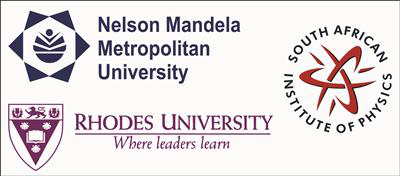Speaker
Apply to be<br> considered for a student <br> award (Yes / No)?
No
Please indicate whether<br>this abstract may be<br>published online<br>(Yes / No)
Yes
Level for award<br> (Hons, MSc, <br> PhD, N/A)?
N/A
Would you like to <br> submit a short paper <br> for the Conference <br> Proceedings (Yes / No)?
No
Abstract content <br> (Max 300 words)<br><a href="http://events.saip.org.za/getFile.py/access?resId=0&materialId=0&confId=34" target="_blank">Formatting &<br>Special chars</a>
Accelerator Mass Spectrometry (AMS) is a method to measure minute traces of long-lived cosmogenic and anthropogenic radioisotopes in all domains of our environment at large: atmosphere, hydrosphere, biosphere, cryosphere, lithosphere, cosmosphere, and technosphere [1]. In the context of AMS, a long-lived radioisotope is one whose detection by atom counting is much more efficient than counting radioactive decays. For example, from the 60 million C-14 atoms in one milligram of carbon, only one decays per hour, whereas it is possible to detect one million C-14 atoms in an hour by direct atom counting. AMS is almost exclusively performed with tandem accelerators, because the use of negative ions and the terminal stripping process provides an efficient suppression of background from stable isotopes, which allows one to measure radioisotope-to-stable isotope ratios in the range from 10-12 to 10-16. Although AMS started originally at accelerators used for nuclear physics experiments – and are still performed at such facilities – a variety of dedicated AMS facilities were developed [2]. Currently, there are about 100 AMS facilities world-wide, with the first one in Africa now operational at the iThemba Labs in Johannesburg. Due to its presence in organic matter and its attractive half-life (5700 yr) for dating, C-14 is by far the most-used radioisotope in AMS. However, there are a number of other radioisotopes such as Be-10, Al-26, Cl-36, Ca-41, I-129, U-236 which are also frequently used with AMS. Here, a few selected examples from archaeology, astrophysics, geophysics, and biology will be discussed.
[1] W. Kutschera, Int. J. Mass Spectr. 349-350 (2013) 203
[2] H.-A. Synal, Int. J. Mass Spectr. 349-350 (2013) 192

